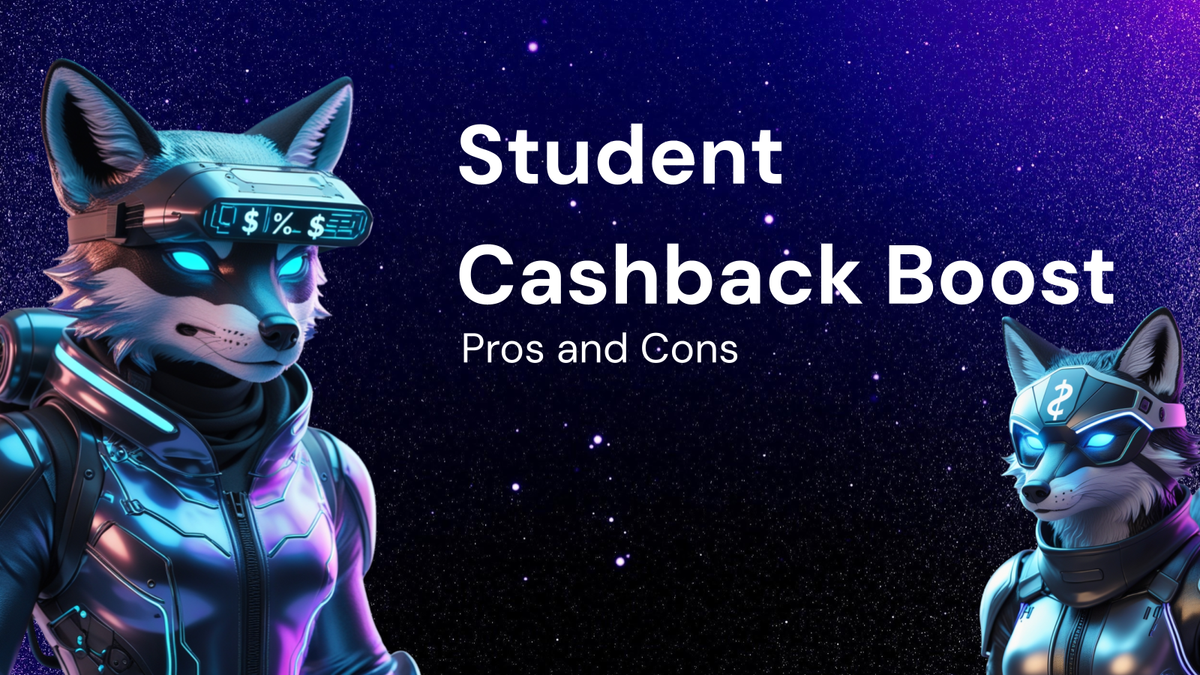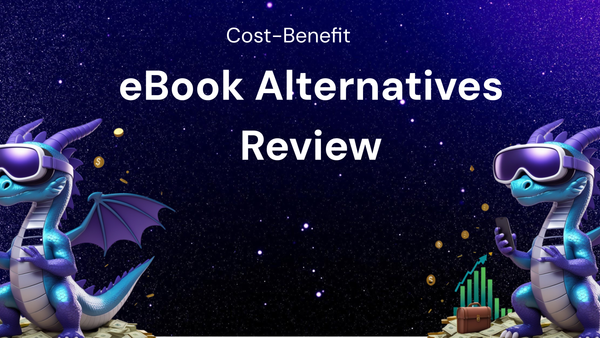Student Discounts with Cashback Boost: Pros and Cons

Student Discounts with Cashback Boost: A Smart Deal or Just Clever Marketing? Pros and Cons
Being a student is a unique experience, filled with late-night study sessions, ramen noodles, and the perpetual struggle to make ends meet. Every penny counts, and the allure of discounts is strong. In recent years, student discounts have become increasingly sophisticated, often incorporating cashback incentives. This raises the question: are these "student discounts with cashback boost" genuine lifesavers for budget-conscious learners, or are they cleverly designed marketing tactics that ultimately benefit the companies more than the students?
This blog post will delve deep into the world of student discounts with cashback boosts, exploring their pros and cons from various angles. We'll examine the potential benefits for students, such as saving money and building financial literacy, while also scrutinizing the potential drawbacks, including overspending, data privacy concerns, and the risk of being lured into unfavorable financial products. By understanding both sides of the coin, students can make informed decisions and maximize the true value of these offers.
What are Student Discounts with Cashback Boosts?
At their core, student discounts with cashback boosts are loyalty programs tailored specifically for students. They typically function as follows:
- Eligibility: Students are required to verify their enrollment at a recognized educational institution, usually through platforms like UNiDAYS, Student Beans, or directly with the retailer.
- Discount Offer: Once verified, students gain access to exclusive discounts on a range of products and services, from clothing and electronics to entertainment and travel. These discounts can range from a few percentage points to significant reductions.
- Cashback Component: The "cashback boost" is the differentiating factor. Instead of simply receiving a discount at the point of purchase, a percentage of the money spent is credited back to the student's account. This cashback can be redeemed in various ways, such as statement credits, gift cards, or direct transfers to a bank account.
- Platform Integration: These programs are often integrated into dedicated mobile apps or online platforms, making it easy for students to browse deals, track their cashback earnings, and manage their accounts.
The Alluring Pros: Why Students are Drawn to These Programs
The appeal of student discounts with cashback boosts is undeniable, offering several potential advantages for cash-strapped students:
- Significant Savings: The most obvious benefit is the opportunity to save money. Discounts on everyday essentials, academic materials, and leisure activities can add up significantly over time, freeing up valuable funds for other needs, such as tuition, rent, or textbooks. The cashback component further amplifies these savings, offering an additional layer of financial relief.
- Access to a Wider Range of Products and Services: Student discount programs often partner with a diverse range of retailers, encompassing various categories. This allows students to access products and services they might not otherwise be able to afford, from premium software for their studies to discounted travel opportunities.
- Enhanced Budgeting and Financial Awareness: Tracking cashback earnings and managing a dedicated account can encourage students to be more mindful of their spending habits. By seeing exactly how much they are saving (or potentially overspending) through the program, they can develop a better understanding of their financial situation and improve their budgeting skills.
- Opportunity to Earn Money on Necessary Purchases: Unlike traditional discounts that only reduce the initial price, cashback offers the potential to earn money back on purchases that students would likely make anyway. This can be particularly helpful for essential items like textbooks, stationery, and groceries.
- Convenience and Accessibility: The integration of these programs into mobile apps and online platforms makes them incredibly convenient to use. Students can easily browse deals, track their earnings, and redeem their cashback rewards, all from the palm of their hand.
- Discovering New Brands and Products: By browsing the various deals and promotions offered through these programs, students can discover new brands and products they might not have otherwise encountered. This can broaden their horizons and potentially lead to finding new favorites.
- Building Credit History (Potentially): Some student cashback programs are linked to credit cards designed for students. Using these cards responsibly and paying balances on time can help students build a positive credit history, which is crucial for future financial endeavors like renting an apartment or securing a loan.
The Hidden Cons: The Potential Pitfalls of Cashback Programs
While the benefits are attractive, it's crucial to acknowledge the potential downsides of student discounts with cashback boosts. These programs are not always as straightforward as they appear, and students need to be aware of the potential risks:
- Encouraging Overspending: The allure of discounts and cashback can be a powerful motivator to spend more than necessary. Students might be tempted to buy things they don't really need simply because they perceive them as a "good deal." This can lead to impulse purchases and ultimately undermine their budgeting efforts. The feeling of "getting money back" can create a false sense of saving, even when the overall spending is excessive.
- Complexity and Confusing Terms and Conditions: Many student discount programs come with complex terms and conditions that are often overlooked by students. These can include minimum spending requirements, restrictions on eligible products, expiration dates for cashback rewards, and fees associated with redeeming cashback. Failing to understand these terms can lead to disappointment and frustration.
- Data Privacy Concerns: To participate in these programs, students are required to share personal information, including their student status, contact details, and potentially even their spending habits. This data can be used by the program provider for marketing purposes or shared with third-party partners, raising concerns about privacy and data security. It's crucial to carefully review the privacy policies of these programs before enrolling.
- The Risk of Being Lured into Unfavorable Financial Products: Some student cashback programs are linked to specific credit cards or other financial products. While these products might offer attractive cashback rewards, they could also come with high interest rates, annual fees, and other unfavorable terms. Students need to carefully evaluate the overall cost and benefits of these products before signing up, rather than being solely swayed by the cashback incentives.
- Limited Applicability and Retailer Restrictions: While student discount programs partner with a wide range of retailers, the discounts and cashback offers might not be applicable to all products or services. Certain brands or items might be excluded from the program, limiting the actual savings that students can achieve.
- The "Discount" Might Not Be a Real Discount: Sometimes, the "discounted" price offered through these programs is not significantly lower than the regular price available elsewhere. Retailers might inflate the original price to make the discount appear more attractive. It's always a good idea to compare prices across different retailers before making a purchase, even with a student discount.
- Cashback Redemption Limitations: The process of redeeming cashback can sometimes be cumbersome and time-consuming. Some programs require a minimum cashback balance before redemption is allowed, while others might impose restrictions on the redemption methods available. This can make it difficult for students to access their earned cashback and reduce the overall value of the program.
- Dependence on the Program: Relying heavily on student discounts and cashback programs can create a dependence on these offers. Students might become reluctant to make purchases outside of the program, even if they could find a better deal elsewhere. This can limit their flexibility and potentially lead to missed opportunities.
Maximizing the Benefits and Minimizing the Risks: A Student's Guide to Navigating Cashback Programs
To make the most of student discounts with cashback boosts while mitigating the potential risks, students should adopt a strategic approach:
- Do Your Research: Before signing up for any program, thoroughly research its terms and conditions, privacy policy, and reputation. Read reviews from other students and compare different programs to find the best fit for your needs.
- Budget Wisely: Don't let the allure of discounts and cashback lead to overspending. Create a budget and stick to it, only purchasing items that you actually need and can afford.
- Compare Prices: Always compare prices across different retailers before making a purchase, even with a student discount. Ensure that the "discounted" price is genuinely lower than the regular price available elsewhere.
- Understand the Terms and Conditions: Carefully read and understand the terms and conditions of the program, paying attention to minimum spending requirements, restrictions on eligible products, expiration dates for cashback rewards, and fees associated with redemption.
- Protect Your Data: Be mindful of the personal information you share with the program provider. Review the privacy policy and understand how your data will be used and protected.
- Evaluate Financial Products Carefully: If the program is linked to a credit card or other financial product, carefully evaluate its overall cost and benefits before signing up. Consider factors like interest rates, annual fees, and credit limits.
- Redeem Cashback Regularly: Don't let your cashback rewards accumulate indefinitely. Redeem them regularly to ensure that you don't miss out on the benefits due to expiration dates or changes in the program terms.
- Don't Rely Solely on the Program: Remember that student discounts and cashback programs are just one tool in your financial arsenal. Explore other ways to save money, such as buying used textbooks, cooking meals at home, and taking advantage of free activities.
- Be Aware of Marketing Tactics: Recognize that these programs are ultimately marketing tools designed to drive sales. Be a critical consumer and don't be swayed by deceptive marketing tactics.
Conclusion: A Valuable Tool When Used Wisely
Student discounts with cashback boosts can be a valuable resource for budget-conscious students, offering the opportunity to save money on essential purchases and build financial awareness. However, it's crucial to approach these programs with a critical eye, understanding the potential pitfalls and adopting a strategic approach to maximize the benefits while minimizing the risks. By doing their research, budgeting wisely, and being mindful of the terms and conditions, students can harness the power of these programs to achieve their financial goals and make the most of their limited resources. Ultimately, the key lies in responsible spending and informed decision-making, ensuring that these programs serve as genuine tools for financial empowerment rather than clever marketing traps. They are a tool, and like any tool, their effectiveness depends entirely on the user.




